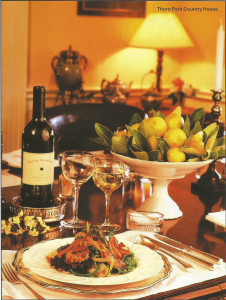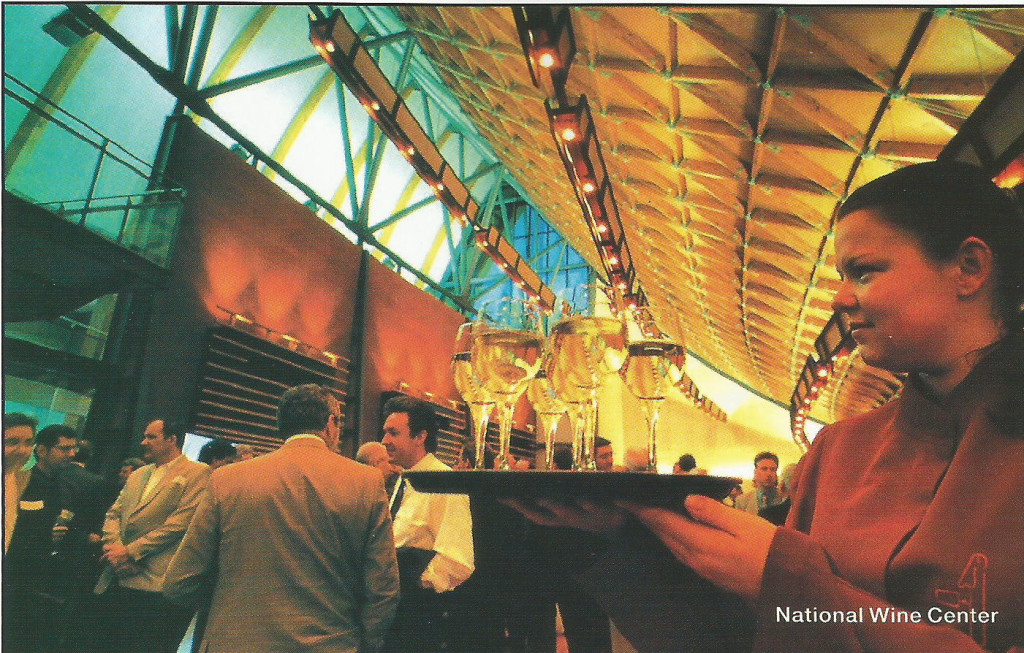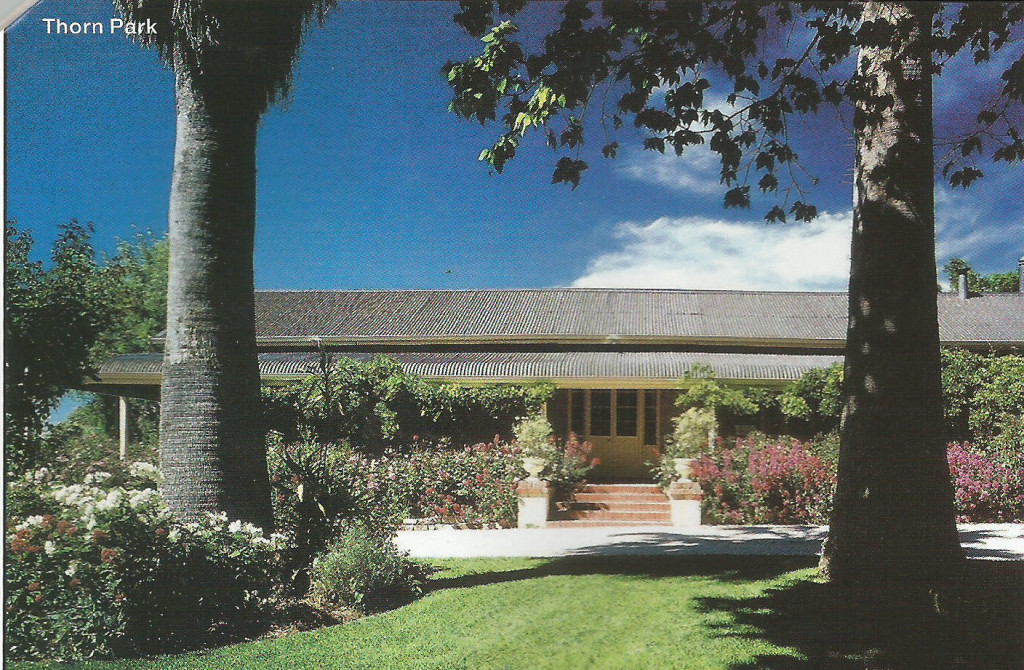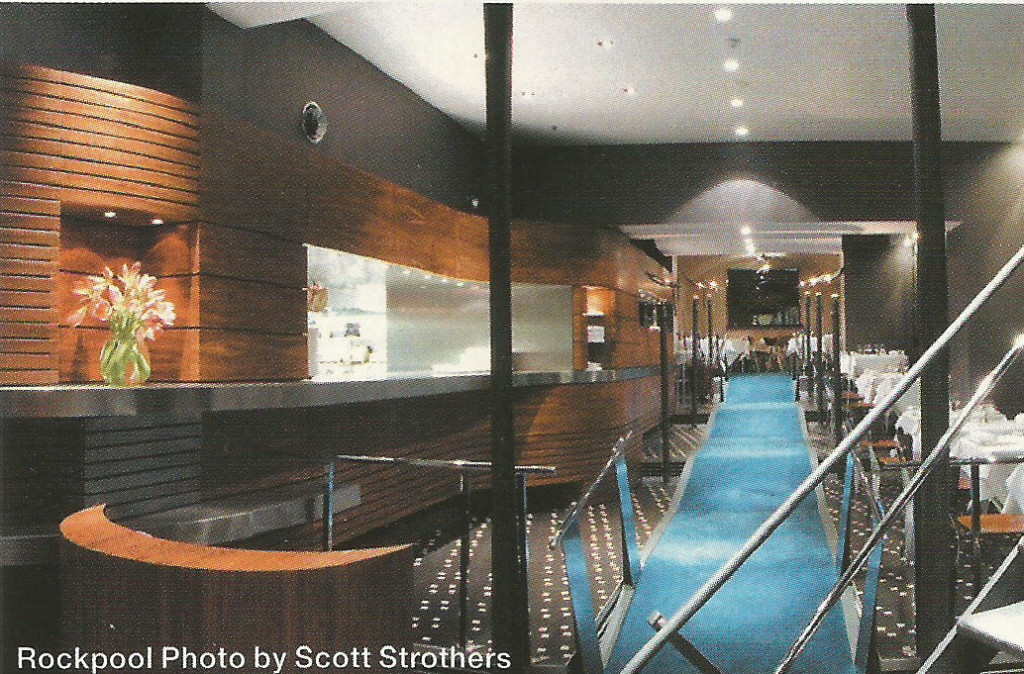Exploring South Australia
Issue 15 – April 2003
 If your idea of an Australian vacation is hanging out at the 24/7 gay bars of Sydney’s Oxford Street then South Australia is not for you. For my money, a vacation means getting away from the hustle and bustle and need to constantly do things, and the wine and hill country of the Clare and Barossa Valleys is a great option. I’m seriously into food, wine, and true relaxation, so I naturally put South Australia on my “must do” list. Exploring wineries, small farms, wildlife parks, and the countryside are just a few of the things that await the intrepid traveler.
If your idea of an Australian vacation is hanging out at the 24/7 gay bars of Sydney’s Oxford Street then South Australia is not for you. For my money, a vacation means getting away from the hustle and bustle and need to constantly do things, and the wine and hill country of the Clare and Barossa Valleys is a great option. I’m seriously into food, wine, and true relaxation, so I naturally put South Australia on my “must do” list. Exploring wineries, small farms, wildlife parks, and the countryside are just a few of the things that await the intrepid traveler.
I started my vacating by winging my way into Adelaide. Flights from the United States tend to connect through Melbourne or Sydney. You can also arrive by rail from either of those stopovers. The city proper is a square mile of only about 40,000 people, ringed by a manicured parkland. Just across a small river, North Adelaide is half the size and is the center of the main historic district with many beautiful homes and buildings worth exploring. Overall, Adelaide’s suburbs take up 140 square miles, populated by over a million people.
There are many places to stay in Adelaide, from small boutique hotels to modern luxury towers. Two places that exemplify this spectrum are The Embassy, a new luxury apartment tower on the North Terrace (www.pacifichotelscorporation.com.au), and the quirky Fire Station Inn in North Adelaide. The latter is a converted firehouse that rates five stars in most travel guides with huge, well appointed rooms, and, for the ground floor unit, a restored antique fire engine parked in the bedroom (www.adelaideheritage.com/firestation.html). This conjured up some interesting fantasies for me, as I never outgrew wanting to be a fireman.
A day or two to explore this city with its beautiful art museums, lively pub scene, and many fine dining restaurants gets the ball rolling. I spent a morning wandering the Central Market and its many food shops, including “Stall 55” that sells reasonably authentic “bush tucker” (indigenous Australian foods). I also viewed some of the more fascinating indigenous peoples’ exhibits at both the South Australian Museum and the Tandanya Art Gallery. If you’d like a truly personalized tour of the city and its bounty, touch base with Tourabout Adelaide where they can set you up with an individual guide. (www.touraboutadelaide.com.au)
Before long it was time to drop in at the Universal Wine Bar and have a glass or two of the local vino. One of Australia’s most famous chefs works the range at The Grange, a haute cuisine establishment that serves a unique tasting menu of love it or hate it fare. If you’re interested in a modern take on many of the unique ingredients of the Australian outback, drop in for dinner at Red Ochre, a floating restaurant on Torrens Lake, just off the North Terrace.
Perfect timing would have your visit coincide with Adelaide’s famed Feast. This is a gay and lesbian extravaganza of cultural, political and social events that takes place over a month-long period in late October and early November. Whether it’s a discussion group on gender identity, a picnic in the park, an evening of music, or a stunning drag show, everything and everyone is included. (www.feast.org.au)
 Before heading out to the countryside, a mandatory stop is the National Wine Centre of Australia which features a fascinating interactive museum dedicated to fermented grape juice and the people who make it. While there, drop in for a glass or two and a bite at de Castella’s, the Centre’s delightful restaurant. In a fun reversal of typical menus, this one lists the wines available by the glass and offers some suggested pairings of dishes that the chef can whip up.
Before heading out to the countryside, a mandatory stop is the National Wine Centre of Australia which features a fascinating interactive museum dedicated to fermented grape juice and the people who make it. While there, drop in for a glass or two and a bite at de Castella’s, the Centre’s delightful restaurant. In a fun reversal of typical menus, this one lists the wines available by the glass and offers some suggested pairings of dishes that the chef can whip up.
When visiting the wine country you will need to rent a car, and keep in mind that whole driving on the wrong side of the road thing. My introduction to some of Australia’s finest white wines, especially those made from Riesling, begins in Clare Valley. Most wineries here have tasting rooms, and some even have organized tours. I found some of the more fascinating happenings at the smaller venues like Mount Horrock’s, Grosset, and Knappstein, but don’t neglect the bigger wineries where there might be a chance to sample a bigger selection.
 There are two absolutely delightful places I recommend for accommodation in Clare Valley. The first, gay owned and operated Thorn Park Country House, is located in the Sevenhill area. Long-time partners David Hay and Michael Speers have put together one of the coolest guest houses at which you’ll ever stay. Beautifully furnished and appointed private rooms are located in a century and half old homestead on 65 acres of rolling hills. Here you can kick back and relax, or take advantage of art and cooking classes offered on site. Deliciously prepared breakfast and dinner are included in the package. (www.thornpark.com.au)
There are two absolutely delightful places I recommend for accommodation in Clare Valley. The first, gay owned and operated Thorn Park Country House, is located in the Sevenhill area. Long-time partners David Hay and Michael Speers have put together one of the coolest guest houses at which you’ll ever stay. Beautifully furnished and appointed private rooms are located in a century and half old homestead on 65 acres of rolling hills. Here you can kick back and relax, or take advantage of art and cooking classes offered on site. Deliciously prepared breakfast and dinner are included in the package. (www.thornpark.com.au)
The second place is the gorgeous 19th century Martindale Hall. A perfectly restored and maintained museum home, the rooms are available for rental packages for individuals or small groups. As an active museum, you’ll have to vacate the premises during the day (your belongings safely stowed away), but come evening, dinner is served in formal manor style, and the classic rooms are prepared for sleeping like a nobleman or noblewoman. (www.martindalehall.com)
After enjoying some of the pleasures of Clare Valley, take a short drive over the hills to the Barossa Valley. Here Shiraz is king, and some of Australia’s best examples are available. I wouldn’t dream of missing the tasting rooms at Peter Lehmann, Henschke and Kilikanoon for award winning representatives of the class. Lunch at the famed Bridgewater Mill affords samples of some of the best modern Australian fare in the South. For a Mediterranean-Australian fusion, the Vintner’s Bar & Grill is a great choice.
To arrange an individually planned tour of the region, with a focus on food and wine, contact A Taste of South Australia (www.tastesa.com.au). Whether it’s driving, cycling, hiking or even a private limousine, you can’t beat having people who know the right connections on your team.
If you have the time and feel adventurous, there are other wine regions to explore, including McLaren Vale and the other “Southern Vales“, the Adelaide Hills, Coonawarra and many more. For more information about South Australia visit www.southaustralia.com
Passport magazine is a relatively new, ultra-slick, ultra-hip gay travel magazine. My friends Don Tuthill and Robert Adams, respectively the publisher and editor-in-chief, who have owned and run QSF magazine for many years, launched this publication recently. It has received industry accolades. They asked me to come along and write the occasional article for this venture as well.

